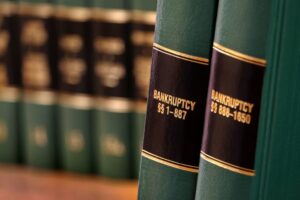Decoding Bankruptcy: Common Terms and Definitions Explained
Facing personal bankruptcy or corporate bankruptcy can be overwhelming. As you start the process, you’re sure to encounter unfamiliar terms and legal requirements. This guide aims to simplify complex topics and offers helpful bankruptcy definitions to get your financial journey off to a good start.
Understanding Bankruptcy in Canada
Bankruptcy is a legal status for individuals or business entities that cannot repay their debts. In Canada, this process is governed by the Bankruptcy and Insolvency Act, a federal law that regulates business and consumer proposals and bankruptcies. The Act offers a fresh start to those overwhelmed by financial obligations.
Bankruptcy Guidelines
The Superintendent of Bankruptcy has established income guidelines determining the basic needs of individuals and families undergoing bankruptcy. These guidelines are adjusted annually and scaled based on household size. They help establish what portion of your income should be contributed toward your debts. If your income exceeds the guidelines, the surplus is divided, with a portion going to your trustee to pay creditors. If your income is below the guidelines, bankruptcy may be your best option.
Statement of Affairs
This bankruptcy document lists all your assets, their values, and whether they are secured, along with a complete list of creditors and the amount owed to each. Personal details such as employment, marital status, and number of dependents are also included. This document, sworn to be true under oath, provides a clear picture of your financial situation, allowing creditors and the trustee to fully understand your circumstances.
The Key Players in Bankruptcy
Debtors are individuals or businesses unable to meet their debt obligations. They face the task of declaring bankruptcy, navigating legal requirements, and getting a fresh financial start.
An insolvent person cannot meet their financial obligations as they come due. Recognizing this status is the first step toward seeking financial relief through bankruptcy or alternative solutions.
Creditors are individuals or entities to whom debtors owe money. Secured creditors have a legal claim on some asset as collateral for the debt, while unsecured creditors do not have any security for the debt owed to them.
Licensed insolvency trustees administer proposals and bankruptcies, providing a necessary link between debtors and creditors. Their government-licensed status ensures a wealth of knowledge and expertise to help the process go smoothly.
Co-signers are people who sign loans on behalf of another person. Bankruptcy greatly impacts them because their responsibility for the loan does not disappear with the declaration of bankruptcy.
Inspectors are appointed representatives of creditors, providing oversight in the administration of proposals and bankruptcies. Their expertise and experience assist trustees in making informed decisions.
The Official Receiver acts on behalf of the federal government within the Office of the Superintendent of Bankruptcy. Their duties include accepting bankruptcy documents, examining bankrupts under oath, and facilitating creditor meetings.
Navigating Bankruptcy
Bankruptcy is structured to ensure fairness and clarity for all involved. Here’s what to expect:
- Bankruptcy court is often the starting point. A judge or registrar in this specialized court makes crucial decisions about the bankrupt’s application for discharge, among other insolvency matters.
- Creditors’ meetings aren’t always required, but when convened, they allow creditors to meet with the debtor and the trustee. Questions about assets, debts, and financial prospects are addressed here.
- Credit counselling is a mandated part of bankruptcy in Canada, designed to help individuals understand and manage their financial situation better. These sessions teach money management skills, offer cost-cutting strategies, and advise on rebuilding credit.
- Examination under oath, while uncommon, may be requested by the Official Receiver. This process involves asking the debtor questions about their finances and the circumstances leading to bankruptcy. It’s most likely in cases of repeat bankruptcy, significant debt, or allegations of dishonesty.
Overcoming Harassment in Bankruptcy
After declaring bankruptcy, the obligation to make payments directly to your creditors ceases. Instead, you pay your trustee, who distributes payments among your creditors based on the rules in the Bankruptcy and Insolvency Act.
The Act explicitly protects you from creditor harassment. Once you declare bankruptcy or file a consumer proposal, creditors are generally prohibited from contacting you directly. If creditors continue to call or send letters, you can inform them of your bankruptcy status and refer them to your trustee.
Filing for bankruptcy also immediately halts most legal actions made against you by creditors. This means wage garnishments, lawsuits, and other legal attempts to collect debts are stopped. However, actions related to criminal proceedings or certain family law matters are not affected by bankruptcy.
Moving Forward from Bankruptcy
Rebuilding your credit rating after bankruptcy is an important step toward regaining financial stability. The process might be tough, but with the proper guidance, you can come out stronger on the other side.
At J. Bottom & Associates Ltd., we have over 55 years of combined experience as licensed insolvency trustees. Our family-owned and operated firm specializes in creating personalized solutions to help you overcome personal or business debt.
For comprehensive bankruptcy help, please contact us for a complimentary and confidential financial assessment at one of our offices in New Westminster, North Vancouver, or Port Coquitlam, BC. We’re here to help you obtain financial freedom in the best possible way for you.
